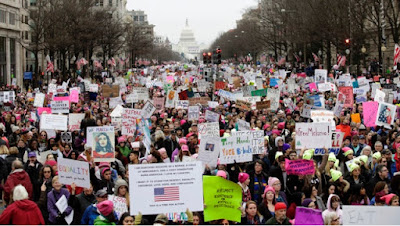But without a path from protest to power, the Women's March will end up like Occupy. It is exciting when a protest meme leaps from social networks to the streets, capturing the imagination of millions. But it is all too easy to succumb to the false hope that a big splashy protest march is a transformative tsunami that leads to ballot box victory on election day. A big splashy protest march is only the first step on the long and often difficult road to winning elections.
- The Guardian: Without A Path From Protest To Power
- The Women's Marches may have been the largest demonstration in US history
Democrats have about 90 weeks until early voting starts for the Nov 2018 election. Activists at the county and neighborhood levels must work every week to identify every Dem leaning voting age citizen, documenting their contact and demographic info. As Democratic leaning people are identified, county level organizations must plan and execute programs that build relationships with those people to make them an active part of the Democratic base.
Those programs must be designed to invite that disconnected part of the electorate to participate in regular conversations at house and town hall meetings, and on social media. Democrats must do old fashioned base building work, and learn how to combine Internet and mobile communication with those traditional community organizing activities to accomplish that mission.
In the realm of political plays, it does seem that the most important number for Democrats in the near term is Democrats need gain only 24 U.S. House seats to be the majority in that chamber.
As the majority party, Democrats can block legislation, conduct investigations, and more to limit the GOP agenda, and perhaps set the stage for bigger gains in 2020. It's do-able in a wave year - maybe a pro-women wave election year.
